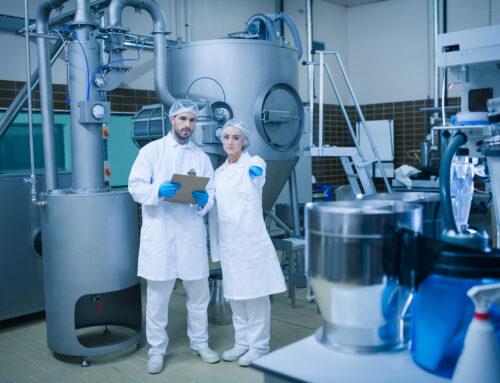By Michael Shabaka, Ph.D., Manex Consulting
The public expects that when they consume a food product, it is safe to eat. Several industry standards such as hazard analysis and critical control points (HACCP), good manufacturing practice (GMP), safe quality food (SQF) and food safety modernization act (FSMA) are in place to help facilitate the safe production and handling of food products. However, once a product is in widespread use, unforeseen problems can lead to a recall. It is the manufacturer and Food and Drug Administration’s (FDA) responsibility to respond immediately to minimize harm.
Following is important information to assist California food processors with food safety recall prevention and response.
When an FDA-regulated product is either defective or potentially harmful, a recall is issued. A recall removes the contaminated product(s) from the market in hopes of correcting the problem. According to the FDA, this is the most effective means for protecting the public.
According to the FDA, recalls are almost always voluntary. The manufacturer is often the first to discover a problem and recalls a product on its own, while at other times, a manufacturer recalls a product after the FDA raises concerns. It is generally rare that the FDA will request a recall. However, in every recall, it is the FDA’s role is to oversee the manufacturer’s strategy and assess the effectiveness of the recall.
About 80% of all foods eaten in the United States can be subjected to a food safety recall. Additional FDA-regulated products subject to recall include human drugs, animal drugs, medical devices, radiation-emitting products, vaccines, blood and blood products, transplantable human tissue, animal feed and cosmetics.
The FDA has three classifications for food safety recalls. Class I is dangerous or defective products that predictably could cause serious health problems or death. Class II are products that might cause a temporary health problem or pose only a slight threat of a serious nature. Class III are products that are unlikely to cause any adverse health reaction but violate FDA labeling or manufacturing laws.
There are three steps to a food recall:
- First Alert – This is when a company discovers there’s a problem and begins FDA notification. Or the FDA “hears” of a problem through a consumer notification.
- Alerting the Public – Not all recalls are announced in the media. The FDA seeks publicity about a recall only when the public needs to be alerted to a serious hazard. All recalls go into the FDA’s weekly Enforcement Report.
- Effectiveness Checks – A recall is considered complete after all the company’s corrective actions are reviewed by the FDA and deemed appropriate.
The most effective way to mitigate the possibility of your products being recalled is to have effective HACCP, GMP and current good manufacturing practice (cGMP) policies that you consistently follow. In addition, it is important to follow the food labeling requirements as outlined by the FDA and to ensure that any HACCP or c/GMP plans are updated as your product formulation changes.
Safety is on everyone’s mind at the moment so NOW would be a good time to ensure you are following the FDA guidelines and recommendations for food safety.
Resource: U.S. Food & Drug Administration Guideline
About the Author
Michael Shabaka, Ph.D., is the Director of Sales and Innovation Excellence for Manex. He has over 20 years of business development, sales and marketing experience, spanning several industries including biotech, high tech, publishing, environmental lab services, and the non-profit sector. Dr. Shabaka holds a Ph.D. in Organizational Behavior with a concentration in Transformative Learning and Change from the California Institute of Integral Studies, San Francisco. He also holds a Master of Business Administration degree in Marketing and Finance and a Bachelor of Arts degree in International Affairs from Holy Names College, Oakland. He can be reached at mshabaka@manexconsulting.com.


